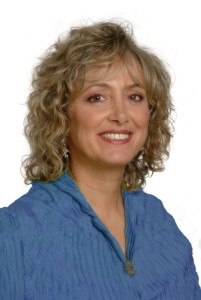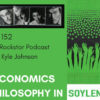014: Shoshana Grossbard on Why Dry Cleaners Charge Women More, on the Economics of Love & Marriage and on Polygamy
 Shoshana Grossbard is Professor of Economics at San Diego State University and founding editor of the Review of Economics of the Household. Shoshana has been a fellow and visiting lecturer at numerous universities including Stanford, Columbia University, the University of Zaragoza, Spain, Tel Aviv and Bar Ilan University, as well as in Munich and Bonn, Germany.
Shoshana Grossbard is Professor of Economics at San Diego State University and founding editor of the Review of Economics of the Household. Shoshana has been a fellow and visiting lecturer at numerous universities including Stanford, Columbia University, the University of Zaragoza, Spain, Tel Aviv and Bar Ilan University, as well as in Munich and Bonn, Germany.
Shoshana obtained her Phd from the University of Chicago where she developed an interest in the New Home Economics from its founders, the late Nobel Laureate Gary Becker and the late Jacob Mincer. The main focus of Shoshana’s research is household economics, family economics and the economics of marriage and, as a student, developed her first non-unitary model of household decision-making. Shoshana is actively promoting the establishment of household economics as a separate specialty in economics. She is one of the first social scientists to have analyzed consequences of gender imbalance in the sex ratio for intra-household distribution, labor supply, fertility and cohabitation. The economics and social impact of polygamy is also a research interest.
Shoshana has published 5 books and more than 50 articles on the determinants of marriage, consumption and labor supply and on the law and economics of household decisions. She is fluent in English, French, Hebrew, Spanish, and Dutch and has presented her work at many universities in more than 13 countries.
Economic Themes:
In this interview, Shoshana mentions and discusses: household economics, family economics, economics of the household, household decision-making, sex-ratios, the economic and social impact of polygamy, determinants of marriage, opportunity cost, consumption and labor supply, immigration, population, marriage, price discrimination, government intervention and elasticity.
Economists and Economic Schools:
In this interview, Shoshana mentions: New Home Economics, Gary Becker, Jacob Mincer, Adam Smith, Arleen Leibowitz, Linda Edwards, Andrea Beller, Elizabeth Landes, Catalina Amuedo-Dorantes and Sankar Mukhopadhyay.
Shoshana’s Defining Moment/Affirmations/Mantra:
Shoshana is defined by the feminist movement of the 1960s/1970s in her early student days and her mother’s dislike of being a housewife.
I’ve remained a feminist for the rest of my life. It was always very clear to me that I was going to have a career in addition to having a family.
Personal Habits:
Hard work. I work very long hours, I work very hard and I’m very motivated to be successful. There’s no other way.
Advice:
It’s very important to have a critical eye. Whatever you read you have to realise that most research, including research by economists is biased by the point of view of the writer and they have an axe to grind typically. You have to try to figure out what’s the axe they’re grinding before you read it.
In this episode, you will learn:
- about Shoshana being a 1970s hippie and her demonstrations against King Constantine of Greece.
- about the differences in female educational participation between the 1960s and present day.
- about the sexist advertisements that existed which placed the wife in the household.
- about the origins of the New Home Economics.
- about what the theory of household means.
- how Shoshana transitioned herself from an interest in the economics of education to the economics of polygamy while a student of Gary Becker.
- how Shoshana’s approach to the study of polygamy differed with Gary Becker’s.
- what quasi-wages are for the stay-at-home mum or dad.
- if there is an opportunity cost to marriage.
- the implication on labor force participation as a result of marriage.
- about WiHo or Work-in-Household.
- about the importance of the sex-ratio in determining labor force participation.
- how Shoshana calculates the sex-ratio.
- how women’s participation in the labor force can be a direct result of fluctuations in the sex-ratio.
- how a high sex-ratio (more men than women) can increase the bargaining power of men.
- how a low sex-ratio (more women than men) can increase the bargaining power of women.
- if Hilary Clinton‘s year of birth allowed her to be the successful and educated person she is today due to the low sex ratio in the US between 1946 and 1950.
- about the marriage-squeeze hypothesis (in which there is a shortage of men or women for marriage).
- about the detail of Ireland’s population pyramid, which indicates a male marriage squeeze for those aged 4 to 10 (more males due to births) and a female marriage squeeze for those aged 20 to 29 (more females due to male emigration).
- about the relevance of the sex-ratio of immigrants and how the freedom of labor can solve the problem of a marriage squeeze.
- if the availability of polygamy translates into a higher bargaining power for women.
- if polygamy solves a marriage market disequilibrium.
- about the polygamy ruling in Canada.
- how polygamy can be harmful for young men and why they are known as the lost boys.
- about the Fundamentalist Latter Day Saints in British Columbia.
- if the government should intervene in markets where gender price discrimination occurs.
- who pays more for dry-cleaning services – males or females – based on their elasticity of demand.
- if we should trust our spouse given the ideology behind economics that all market participants are self-interested and seek to gain wealth without any consideration of others.
- if spousal love diminishes once you have children and that the love you have toward your child compensates for the lack of love from your spouse.
Origins of New Household Economics:
When Gary Becker and Jacob Mincer started New Home Economics, it was mostly their initiative but it was the students at the University of Columbia at that time who participated in the labor workshops that were very instrumental in promoting and developing it.
There were a high proportion of women who attended the workshop including Arleen Leibowitz and Linda Edwards and, later on, Andrea Beller and Elizabeth Landes.
It is wrong to view New Home Economics as ideologically motivated to maintain old-fashioned gender roles.
One of the major ideas of the New Home Economics is to consider households like firms where there is household production and to analyse them with the same tools economists analyse business firms.
So basically, households are non-profit firms but there are many small non-profit firms in the economy that are considered part of the economy that are counted in GNP. But the most prevalent non-profit firm, the household, is not counted in the GNP.
Jacob Mincer and Gary Becker were not concerned about what was counted in GNP but they were more micro-economists. So they wanted to use all the tool available from price theory and apply them to the analysis of what households do:
- How do they divide the housework?
- Do women participate in the labor force?
- The trade-off between household production and participation in the labor force.
The Origins of Shoshana’s Work:
Shoshana‘s approach to the study of polygamy took account of the point of view of women whereas Gary Becker considered variables such as how men’s incomes determined the number of wives he would have.
Shoshana challenged Gary stating that it’s not just about men’s income but it’s also a matter of women’s education, the age of the women, the fertility of the women and the resources that they have because they can bargain with the men about what they’re willing to do.
Shoshana continued to work on economic development issues because polygamy is practiced mostly in less-developed countries where she examined data in Nigeria and then the study of consensual marriages in Guatemala.
Jacob Mincer advised Shoshana, when she was seeking a job, to do more mainstream economics rather than the exotic research mentioned above which may not be of interest to economists in general. That is when she switched to the study of labor force participation and developed a theory of allocation of time in markets for labor and marriage.
There is a major difference between the model developed by Grossbard and that developed by Becker and Mincer. When Becker and Mincer talk of household production, they refer to households as a unit or as an entity making decisions. However, in Grossbard’s model it is the individuals making decisions.
Household Decision-Making and Quasi-Wages
The fundamental question of New Household Economics: Is there an opportunity cost to marriage and what is the implication on labor force participation as a result of marriage?
Individuals, from an early age, have a concept and vision of how they want to live their lives.
Work in Household (WiHo) represents the willingness to work in a household to, say, raise children.
On Gender Price Discrimination:
“We should all be conscious that sometimes there is exploitation of the consumer and if you don’t like the subliminal advertising that companies use to make you buy perfume or aftershave well then just don’t buy it.”
Dry cleaners charge more for women’s blouses than for men’s shirts, despite them being the same product, with perhaps the main difference being that the buttons on a blouse are typically located on one side of a blouse to that of a man’s shirt.
Dry cleaners are aware that the price elasticity of demand for a woman needing dry cleaning is less than that of a man, meaning that there is more of a need for women to use the dry cleaning services and would, hence pay more as no-one else would do it for them.
On the other hand, the elasticity of demand is more for men, meaning that dry cleaners may charge less for the same service so as to encourage men to dry clean.
Shoshana states that the reason for this gender price differential by dry cleaners is that the majority of men would not go to a dry cleaners as they have a wife, girlfriend or mother who would take on the task of cleaning their clothes. The WiHo or Work in Household is higher for these women as they have, in the majority of cases, taken on the responsibility of running the household chores.
The women who arrive at a dry cleaners are those who have a low WiHo perhaps due to a working career or an unwillingness to take on the responsibility of such chores or even due to the lack of people willing to do the work, such as a spouse.
How the Activities of a Home Differs to the Activities of a Market
Adam Smith stated: “It is not from the benevolence of the butcher, the brewer or the baker that we expect our dinner but from the regard of their own interest”.
If we view all participants in a household as economic agents who have a certain degree of self-interest, should we trust our spouse?
The statement by Adam Smith is about the functioning of the market and how the competition among the bakers and the other professionals brings down the prices and eventually the consumer benefits.
The problem with household production, which is a non-profit firm, is that most of what is produced at home is not going to be sold in the market, principally the children, the beauty of the home, the harmony in the home. These are products that are being consumed by the producers themselves or by the people who pay for the WiHo. In this case, the market system doesn’t work.
The benevolence of the spouse is a very important element. Adam Smith also had a Theory of Moral Sentiments and in the framework of the household, altruism matters. So, benevolence and altruism matters.
Favorite Books:
- Dollars and Sex by Marina Adshade
- The Marriage Motive: The Price Theory of Marriage by Shoshana Grossbard
- Publications of Shoshana Grossbard
Favorite Internet Resource:
- marinaadshade.com and on Twitter: @dollarsandsex
- omgchronicles.vickilarson.com and on Twitter: @OMGchronicles
- Gretchen Livingston on Twitter: @DrGMLivingston
Where To Find Shoshana Grossbard:
- Facebook: Economics of Love
- Twitter: @econoflove
Podcast: Play in new window | Download
 053: Helena Norberg-Hodge on Localisation, Trade Treaties and the Economics of Happiness
053: Helena Norberg-Hodge on Localisation, Trade Treaties and the Economics of Happiness 004: Jadrian Wooten on Using Sports to Carve Out a Career in Economics – Sports Economics
004: Jadrian Wooten on Using Sports to Carve Out a Career in Economics – Sports Economics 152: David Kyle Johnson on Economics and Philosophy in Soylent Green
152: David Kyle Johnson on Economics and Philosophy in Soylent Green 009: Naomi Brockwell (Bitcoin Girl) on Bitcoins, Liberty, Government and Fiat Currency.
009: Naomi Brockwell (Bitcoin Girl) on Bitcoins, Liberty, Government and Fiat Currency. 032: Joe Gladstone on the ‘Pay What You Want’ Pricing Model and Using Big Data to Understand You Better
032: Joe Gladstone on the ‘Pay What You Want’ Pricing Model and Using Big Data to Understand You Better 034: David Simon on Meatonomics and How the Meat and Dairy Industry Impose Substantial Negative Externalities on Society
034: David Simon on Meatonomics and How the Meat and Dairy Industry Impose Substantial Negative Externalities on Society 012: Yoram Bauman on Cartoons, Being a Stand-Up Economist & His Passion to Save the Environment
012: Yoram Bauman on Cartoons, Being a Stand-Up Economist & His Passion to Save the Environment 007: Ryan Blair – Gangster turned Millionaire on Decision-Making, Game Theory and Incentives
007: Ryan Blair – Gangster turned Millionaire on Decision-Making, Game Theory and Incentives 039: David Zetland on Aguanomics, Water Scarcity, Water Wars and ‘Toilet-to-Tap’
039: David Zetland on Aguanomics, Water Scarcity, Water Wars and ‘Toilet-to-Tap’ 050: Dan Ariely on Irrational Behavior and the Importance of Our Environment When Making Decisions
050: Dan Ariely on Irrational Behavior and the Importance of Our Environment When Making Decisions